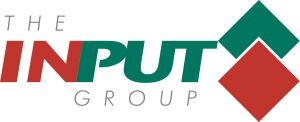There’s lots of lingo when it comes to safety, here is our A to Z guide that puts it into plain language for anyone to digest.
A
Asbestos
The name used for a group of fibrous silicate minerals that once inhaled, have adverse effects on health and can lead to fatal lung diseases.
ACM – Asbestos Containing Material
Used to describe any material that contains asbestos and should be considered hazardous.
Asbestosis
The damage of lung tissue caused by asbestos, resulting in a shortness of breath.
Audit
An expert assessment of an organisation’s health and safety policies, systems and procedures.
Absenteeism
When an employee is habitually and frequently absent from work. This excludes paid leave and occasions where an employer has granted an employee time off.
Accident
An unplanned incident resulting in ill-health, injury, death or damage.
ACOP
Approved Code of Practise. The HSE publish guidance in the form of ACOPs, they describe the recommended methods to comply with regulations imposed by the HASAWA. ACOPs are ‘approved by the Health and Safety Executive, with the consent of the Secretary of State’.
Allergen
Anything that causes an allergic reaction in the body, this might be a rash, anaphylactic shock or swelling of body parts, everyone’s allergic reactions can be different.
Appointed Person
An appointed person is someone your employer appoints to: take charge when someone falls ill or is injured at work, including calling an ambulance if needed; look after the first aid box and other first aid equipment, including restocking the box; and. keep records of treatment given.
Acute exposure
Immediate exposure to a hazardous substance over a short time period.
B
Best Practice
A way of delivering risk control practices which have been recognised by an authoritative body as cooperating with the law.
BSI
British Standards Institution
C
Chronic Exposure
Multiple exposures to a hazardous substance over a long period of time.
CIEH
Chartered Institute of Environmental Health.
Code of Practice
A set of rules fixed by regulatory bodies or trade associations. They are not law themselves but are intended to provide guidance on how to comply with the law.
Common Law
Unwritten law which has been devised through judicial precedent rather than statutes. A breach of common law can however, result in a criminal offence.
Competent Person
A person who has been adequately trained and has the appropriate skills and knowledge to perform certain health and safety tasks without posing a risk to themselves or others.
Confined Space
An enclosed area that has the potential to cause serious harm from hazardous substances or conditions within the space.
Contaminant
A substance, usually a pollutant, which has been discovered in an area where it does not usually belong.
Control Measures
Actions that have been put in place to regulate and reduce the risks associated with the work being carried out.
Corrosive
A substance that has destructive effects on another substance.
COSHH
The Control of Substances Hazardous to Health.
CAR – Control of Asbestos Regulations
A set of health and safety regulations for the management of asbestos/asbestos containing materials (ACMs) in existing non-domestic premises and during any work activity involving asbestos.
CDM – Construction (Design & Management) Regulations
A set of health and safety regulations that apply to all construction work in Great Britain.
CHAS – Contractors Health and Safety Assessment Scheme
CHAS is a health and safety accreditation scheme for the construction industry. Contractors can apply to be assessed and approved under the CHAS assessment scheme.
CLP – Classification, Labelling and Packaging of Substances and Mixtures
The EU (and now GB) duties to classify, label and package substances for sale.
CPP – Construction Phase Plan
The construction phase plan is a document required on every construction project under CDM.
D
Display Screen Equipment
A device that has an alphanumeric or graphic display screen, such as a computer monitor.
dB(A) – Decibel (A-weighted)
A-weighted is an approximation to how the human ear perceives the noise. Used in noise exposure action and limit values.
dB(C) – Decibel (C-weighted)
C-weighting is more commonly used for measuring peak measurements. Used in noise exposure action and limit values.
DSEAR – Dangerous Substances and Explosive Atmospheres Regulations
A health and safety law that require employers to control the risks to safety from fire, explosions and substances corrosive to metals.
E
EAV – Exposure Action Value
The EAV is a value set in regulations, such as The Control of Vibration at Work Regulations, above which you must take action.
ELV – Exposure Limit Value
The ELV is a value set in regulations, such as The Control of Vibration at Work Regulations, that you must not exceed.
Emergency Plan
A plan that has specific instructions to be followed in an emergency. The aim should be to evacuate all people from a dangerous situation or environment.
Enforcement Notice
HSE Inspectors also have the power to issue enforcement notices to prevent and/or stop unsafe workplace activities. HSE enforcement policy will typically apply when health and safety breaches are serious in nature and pose a significant risk to workers or the public.
Ergonomic Hazards
Working methods that have the potential to damage the musculoskeletal system, including forceful movements, vibration, extreme temperatures, improper lifting techniques and inappropriate workstations.
Explosive Proof Protection
Preventative techniques applied to the manufacturing process of equipment for use in high-risk, explosive work environments.
F
Fires
Fires – All fires are the result of three things – heat, oxygen, and a fuel source. There are 5 different classes of fire:
Class A – combustible materials
Class B – flammable liquids
Class C – flammable gases
Class D – combustible metals
Class F – cooking oils
Electrical fires – there is no class E. There fires ignite from electrical appliances but once the appliance is removed, the fire changes class
Flammability – Something that will easily catch fire. You can get flammable liquids, gasses and solids.
Flammability
The ease in which a substance will catch fire.
Flammable Gas
A gas with a low flammability limit that can be readily ignited when mixed with air.
Flammable Liquid
A liquid which can readily catch fire.
Flammable Solid
Solids that are liable to cause fires through friction or absorption of moisture.
Flash Point
The minimum temperature in which the vapour of a substance, when mixed with oxygen, will ignite when a flame is applied.
Fume cupboard
Fume cupboards are designed to capture and remove air-borne hazardous substances generated during laboratory experiments (e.g. gases, vapours, aerosols and particulates/dust).
G
Glare
Bright lights that reflect off a display screen and impede a person’s sight, often causing excessive eyestrain and headaches.
Guarding
A device that prohibits access to a hazardous part of a machine or equipment.
H
H&S – Health and Safety
Health and safety itself!
HASWA / HSW – Health and Safety at Work etc. Act
The Health and Safety at Work etc. Act sets out the general health and safety duties that all businesses have to comply with in the UK. It enables further, more specific, health and safety regulations to be passed by law and enforced under it.
HAVS – Hand Arm Vibration Syndrome
Nearly 2 million people in the UK are at risk from HAVS. Caused by vibration exposure, it’s a painful, disabling and serious condition that’s permanent, but preventable.
HSE – Health and Safety Executive
Britain’s national regulator for workplace health and safety. The HSE provides guidance, controls licensing, inspects, investigates and enforces health and safety laws.
HSF – Health and Safety File
The health and safety file is a document required on most construction projects under CDM.
Health and Safety Representatives
A person that has been appointed by trade unions to represent their colleagues in regards to various issues of health and safety in the workplace.
Health Surveillance
A process of observation that involves monitoring any early symptoms of work related ill-health in employees who may be exposed to certain health risks, such as hazardous chemicals.
Heat Exhaustion
A condition caused by excessive exposure to hot temperatures, usually caused by profuse sweating in warm, poorly ventilated working environments.
Hypersensitive
An extreme physical response to particular substances or environments.
I
IIRSM
The International Institute of Risk and Safety Management.
Improvement Notice
A formal notice that is given by an authoritative health and safety body following a breach of law. The notice will state the committed offence, what action needs to be taken for improvement and the specified date by which it must be taken.
Incident Investigation
The process of gathering information regarding the causes of an incident, with the purpose of formulating control measures to prevent the incident from reoccurring.
Incident/Near Miss
A term for those events that have not resulted in significant harm but have the potential to cause an accident, injury or damage under different circumstances.
IOSH
The Institution of Occupational Safety and Health. View our IOSH courses
Irritant
A non-corrosive substance which can cause inflammation on the body through contact.
L
LEV – Local Exhaust Ventilation
Equipment that is used to control and extract dust and fumes from workplaces.
LITE – Load, Individual, Task, Environment
LITE is an acronym used to remember the key areas to assess in a manual handling assessment. Also known as TILE
LOLER – Lifting Operations and Lifting Equipment Regulations
If you own, operate or control lifting equipment, these regulations apply. LOLER requires that lifting equipment is suitable and regularly inspected and that lifting operations are carried out safely.
Legislation
Legislation is a law or a set of laws that have been passed by Parliament.
M
Manual Handling
Tasks that require people to exert force to move/transport a load by lifting, putting down, pushing, pulling, carrying or moving thereof. (HSE)
Material Data Safety Sheet
A document that details information on potentially hazardous substances, along with guidance on how to handle them safely.
Method Statement
– A statement that will detail how specific working practices should be conducted to ensure they are being carried out safely.
Musculoskeletal Disorder
injuries or disorders that affect the musculoskeletal system and body movement.
MHSWR – Management of Health and Safety at Work Regulations
This set of regulations apply to every workplace, and every employer. The duties reinforce the general duties under the 1974 Act and add additional requirements.
N
NEBOSH
The National Examination Board in Occupational Safety and Health.
Noise Induced Hearing Loss
An incurable condition caused by both acute and chronic exposure to a loud noise.
NVQ
National Vocational Qualification.
O
Occupation Health
The relationship between a person’s health and the working activities that they undertake.
Occupational Illness
An illness that occurs in employees who have been exposed to hazards whilst at work.
P
PAT – Portable Appliance Testing
The examination and testing of electrical appliances and equipment at regular intervals to ensure they are safe to use.
PCI – Pre-Construction Information
The pre-construction information is a document required on construction projects under CDM.
Principal Contractor
Under CDM, a principal contractor is needed when there is more 1 contractor.
Principal Designer
Under CDM, a principal designer is needed when there is more 1 designer.
Prohibition Notice
A prohibition notices are issued where an HSE inspection feels there is a serious risk of personal injury to one or more people. You must not resume the activity until you have taken action to remove or control the risk.
PPE – Personal Protective Equipment
Equipment like hard hats, gloves, safety boots, goggles, aprons, Hi-Viz, harnesses, face shields etc. Used to protect the person from harm.
PUWER – Provision and Use of Work Equipment Regulations
PUWER requires that equipment is safe, suitable, maintained, inspected and installed correctly. The law also requires that equipment is used only by competent people when it is safe to do so.
Policy
A health and safety policy statement sets out how you manage health and safety within your workplace. It demonstrates your businesses attitude towards health and safety and the steps, arrangements and systems you have in place to ensure you comply with Health and Safety legislation.
Permit to Work
Formal, written specifications for controlling risks when carrying out hazardous work, usually for non-routine activities that require special precautions to control the hazards.
Preventive Maintenance
The regular maintenance of work equipment to reduce the risk of failure.
Prohibition Notice
A formal notice that is issued by an authorising health and safety body on discovery of a breach of statute that has the potential to cause an accident or injury. A Prohibition Notice commonly follows a serious accident, with the aim of preventing the hazard from developing or to put a stop to it if it is already in motion.
R
Reasonably Practicable
When the degree of risk can be weighed up against the cost, in terms of time, money and difficulty of implementing control measures. If the cost outweighs the risk, than it is deemed inappropriate for an employer to implement the measures to prevent the risks.
Regulations – In comparison to legislation, regulations are the process of monitoring and enforcing the law and the act of enforcement
Risk Assessment
An examination of the potential risks in the workplace, with the aim of assessing whether enough precautions have been put in place to prevent harm. A risk assessment focuses on the relationship between the worker, the work being carried out, the equipment being used and the conditions of the working environment.
Risk Management
The process of putting control measures into practice and monitoring the results, with the intention of reducing, or eliminating, the potential risks to health and safety.
Routes of Entry
Ways in which hazardous substances can enter the body, including inhalation, injection, ingestion and absorption.
RIDDOR – stands for Reporting of Injuries, Disease & Dangerous Occurrences Regulations 2013.
RIDDOR puts duties on employers, the self-employed and people in control of work premises (the Responsible Person) to report certain serious workplace accidents, occupational diseases and specified dangerous occurrences (near misses).
RoSPA – The Royal Society for the Prevention of Accidents, one of our approval bodies.
RAMS – Risk Assessments and Method Statements
RAMS stands for two types of health and safety documents, that are often found together – Risk Assessments and Method Statements.
RCD – Residual Current Device
An RCD is a sensitive safety device that switches off electricity automatically if there is a fault. Used as a control to reduce the risk of electric shock and protect installations against fire.
REACH – Registration, Evaluation, Authorisation and Restriction of Chemicals
Under REACH, companies are required to identify and manage the risks created by the substances they manufacture and market.
RPE – Respiratory Protective Equipment
Masks, hoods, helmets, suits, and other respirators or breathing apparatus worn to filter out contaminants in the air, or supply clean air to the user.
RRFSO – Regulatory Reform (Fire Safety) Order
Legislation covering fire precautions, responsibilities, duties, assessment, fighting, detection, training and emergency planning.
S
Self-Assessment
An assessment carried out by the individual to determine how safely they are working and fulfilling their health and safety duties.
SMSTS
Site Management Safety Training Scheme.
SSSTS
Site Supervisors Safety Training Scheme.
Statute law
The formal, written law of a country or state.
Stress
While there is not a medical definition of stress, it is still regarded as a medical condition. An individual might feel stressed by situations or events that put pressure on them or the reaction to being placed under pressure. Work-related stress can be caused by big changes, too much pressure, worrying, lack of control and many other things.
SWL – Safe Working Load
Marked on lifting equipment, the safe working load is a load that must not be exceeded
T
TBT – Toolbox Talk
Toolbox talks are short safety discussions. They usually happen on the job and are focused on a single safety topic. Here are 30 free toolbox talks.
TILE – Task, Individual, Load, Environment
TILE is an acronym used to remember the key areas to assess in a manual handling assessment. See known as LITE.
Toxic
Substances, usually poisonous, that cause irritation and have detrimental effects on health.
V
Control of Vibration at Work Regulations
The law for protecting workers from risks to their health and safety from vibration. The regulations introduce action and limit values for hand-arm and whole-body vibration.
W
Workstation – The equipment that employees require to fulfil their work. For DSE, a workstation might include a desk, computer, monitor, mouse & keyboard.
WBV – Whole Body Vibration
Whole-body vibration is the jolting or shaking of the body, usually experienced though sitting or standing on a moving surface. For example, operating impacting machinery, or driving on an unmade road.
WAHR / Height Regs – Work at Height Regulations
Employers and those in control of any work at height activity must make sure work is properly planned, uses the right type of equipment, is supervised, and carried out by competent people.
WEL – Workplace Exposure Limit
Under the COSHH regulations, workplace exposure limits (WELs) are assigned to many hazardous substances. WELs should not be exceeded.
Z
Zero harm
Zero harm refers to an approach to occupational safety that has been adopted by many workplaces.
The goal of a zero-harm approach is to operate a workplace without exposing an individual to injury through the implementation of safe work systems. Zero-harm approaches are linked to exceeding safety regulations.
Zebra
Just because we like them!




